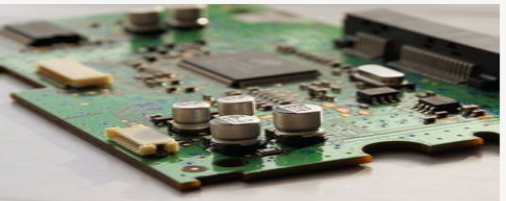What are the main causes of soldering defects on PCB boards?
PCB is an indispensable part of modern electronics, and it is the carrier for the electrical connection of electronic components. With the continuous development of electronic technology, the density of PCBs is also getting higher and higher, and thus the welding process requirements are increasing. Therefore, it is necessary to analyze and judge the factors affecting the quality of PCB welding and find out the welding defects. For this reason, we can make targeted improvements so as to improve the overall quality of the PCB board. Let's take a look at the reasons for PCB welding defects!

1.The solderability of circuit board holes affects the welding quality
Yuankun's "Core" Carrying the World 20 years of genuine "Core" sincere service, the choice of 500,000 customers
The poor solderability of the circuit board holes will cause false soldering defects, affect the parameters of the components in the circuit, cause the conduction of the multilayer board components and the inner layer wires to be unstable, and cause the entire circuit to fail.
The factors affecting the solderability of printed circuit boards are:
(2) Welding temperature and the cleanliness of the metal plate surface will also affect weldability. If the temperature is too high, the solder diffusion speed will increase, and at this time, it will have high activity, which will rapidly oxidize the circuit board and the molten surface of the solder, resulting in soldering defects. Contamination of the circuit board surface will also affect solderability and cause defects. Including tin beads, solder balls, open circuits, poor gloss, etc.
(1) The composition of the solder and the properties of the solder. Solder is an important part of the welding chemical treatment process. It consists of chemical materials containing flux. The commonly used low melting point eutectic metal is Sn-Pb or Sn-Pb-Ag. The impurity content must be controlled by a certain ratio. In order to prevent oxides generated by impurities from being dissolved by the flux. The function of the flux is to help the solder wet the circuit surface of the soldered board by transferring heat and removing rust. Generally, white rosin and isopropanol solvents are used.
2, welding defects caused by warping
Circuit boards and components are warped during the soldering process, and defects such as false soldering and short circuits occur due to stress deformation. Warpage is often caused by temperature imbalances between the upper and lower parts of the circuit board. For large PCBs, warping may occur due to the weight of the board. The ordinary PBGA device is about 0.5mm away from the printed circuit board. If the device on the circuit board is large, the solder joint will be under stress for a long time as the circuit board returns to its normal shape after cooling. If the device is raised by 0.1mm, it will be sufficient to cause Welding is open.
3.The design of the circuit board affects the welding quality
On the layout, when the circuit board is too large, although the soldering is easier to control, the printed lines are longer, the impedance is increased, the anti-noise capability is reduced, and the cost is increased; if it is too small, the heat dissipation is reduced, the soldering is not easy to control, and adjacent lines are prone to appear Mutual interference, such as the electromagnetic interference of circuit boards. Therefore, the PCB design must be optimized:
(1) The heating element should consider the problem of heat dissipation to prevent defects and rework caused by a large ΔT on the surface of the element. The thermal element should be kept away from the heat source.
(2) Shorten the connection between high-frequency components and reduce EMI interference.
(3) Heavy components (such as more than 20g) should be fixed with brackets and then welded.
(4) The arrangement of components should be as parallel as possible, which is not only beautiful but also easy to weld, and it is suitable for mass production. The circuit board is best designed as a 4: 3 rectangle. Do not abrupt wire widths to avoid discontinuities in wiring. When the circuit board is heated for a long time, the copper foil is easy to swell and fall off. Therefore, avoid using a large area of copper foil.
To sum up, in order to ensure the overall quality of the PCB, in the manufacturing process, it is necessary to use excellent solder, improve the solderability of the PCB, and prevent the occurrence of warpage and defects.
If you want to know more, our website has product specifications for the PCB boards, you can go to ALLICDATA ELECTRONICS LIMITED to get more information

